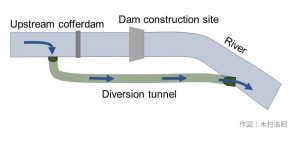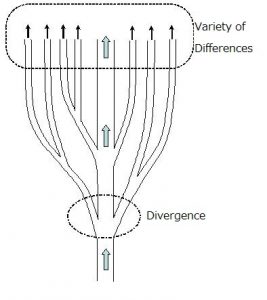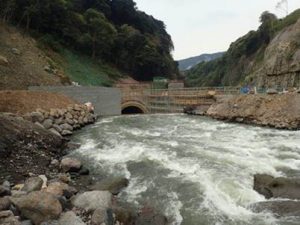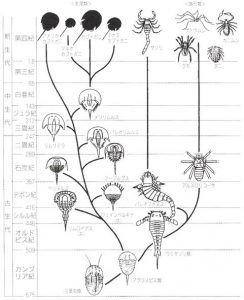━━━━━━━━━━━━━━━━━━━━━━━━━━━━━━━━━━━
【JWF News Vol. 170】Report on the COP24 to the United Nations Framework Convention on Climate Change (UNFCCC)
19 December, 2018
━━━━━━━━━━━━━━━━━━━━━━━━━━━━━━━━━━━
◇ Contents ◇
・Foreword Diversity Results in Evolution
・Report from the Japan Water Forum
– Report on the COP24 to the United Nations Framework Convention on Climate Change (UNFCCC)
– Darvish Yu Water Fund: the 12th Project Completed!
━━━━━━━━━━━━━━━━━━━━━━━━━━━━━━━━━━━
・Foreword Diversity Results in Evolution
By Kotaro Takemura, Chair of the Japan Water Forum
━━━━━━━━━━━━━━━━━━━━━━━━━━━━━━━━━━━
We are approaching the end of 2018. Thanks to your generous support, the Japan Water Forum has undertaken various activities that contribute to the solution of global water issues. Our efforts include a diverse range of activities, such as participating in the 8th World Water Forum in Brazil, assisting grassroots projects in developing countries, and holding the 16th meeting of the Committee for Basic Policy of the Water Security Council of Japan (WSCJ).
Talking of diversity, I think of the term bio-diversity. When I first heard this word, it sounded strange to me. I wondered why they used “diversity” in describing the existence of a large number of different kinds of animals and plants. Another word with the same root is “diversion”. This is a particularly important word for me. It has been deeply ingrained in me for more than 40 years.
Diversion
Forty years ago, after finishing university, I made my debut in the working world at the Kawaji Dam site, located deep in the mountains on the Kinugawa River. I was involved in designing the body of the arch dam. At 140 m in height, it was the highest dam at that time to be built by the Ministry of Construction. I also engaged in geological investigation at the foundations of the dam. At the time, a diversion project was underway at the construction site.
The construction of a dam is accomplished by stopping the flow of water in the river. We cannot pour concrete when the river is flowing. Therefore, what we have to do first is bore a tunnel that will divert the water from the upper reaches of the river, leaving the dam construction site dry. Then we can pour the concrete.
This tunnel is called a “diversion tunnel”. Almost every day, I examined the rock at the entrance of the diversion tunnel. Even after the diversion work had started, I went around the tunnel, repeatedly hitting the rock with a hammer. The tunnel was a perfect place for investigating rock. My career as a civil engineer began at this site.
Is a Variety of Differences Diversity?
At the dam construction site, I learned about the concept of diverging a river’s flow through an English term: diversion. Later, I was involved in the construction of the Ookawa and Miyagase dams. In the course of time, the term “diversion tunnel” has become “temporary drainage tunnel”. But I couldn’t get the term “diversion” out of my head.
Therefore, when I first saw the word, bio-diversity, I was confused as to how diverting water is connected to a word meaning a variety of differences. When I looked up the verb, “divert” in my English‐Japanese dictionary, it said that the word means to make something or somebody change direction or diverge. My understanding of the word was right. The term, diversity has a connection to diverting or branching off.
How diverting flow is connected to a word “tayousei” in Japanese?
While I was pondering this, I drew a rough sketch which helped me find the answer to my question. Figure 1 shows the diversion of a dam. The photo shows the entrance of the diversion.
 |
| Figure 1 |
|
Diversion tunnel swallowing river water |
| Photo |
Divergent Evolution
Figure 2 shows how a river repeatedly branches off from the main stream. When the river repeatedly diverges, it gradually creates different flows. The Japanese term, tayousei, describes the result after the river has diverged. In contrast, the English word, diversity describes the moment of divergence.
 |
| Figure 2 |
This figure resembles a systematic diagram of the evolution of organisms. As a species diverges, it evolves. Figure 3 is a systematic diagram of evolution. If a species diverges, it acquires diversity. As long as organisms maintain diversity, they can withstand drastic changes in the environment and can survive.
|
Phyletic relationship of animals closely related to horseshoe crab |
| Figure 3 |
The opposite of diverge is converge. Convergence brings uniformity. A uniform species could not withstand drastic changes in the environment. The whole species would collapse. If evolution means diversity, uniformity means degeneration. Organisms survive by diversifying. Diversity is a strategy for organisms, including humans, to survive.
The Japan Water Forum is determined to launch a diverse range of activities for the resolution of water environment issues. The privilege of an NPO is to address new challenges without fear of failure. While meeting these challenges, we are sure to find new roads that will lead to a new world. This is a principle of evolution.
In the coming New Year, we at the JWF will do our best to address new challenges based on our experience and past achievements.
━━━━━━━━━━━━━━━━━━━━━━━━━━━━━━━━━━━
・Report from the Japan Water Forum
━━━━━━━━━━━━━━━━━━━━━━━━━━━━━━━━━━━
– Report on the COP24 to the United Nations Framework Convention on Climate Change (UNFCCC)
The 24th Session of the Conference of the Parties (COP24) to the UNFCCC, held from December 2 to 14, was a major international conference for discussing rules and regulations related to reducing the emission of greenhouse gases and adaptation to the impacts of climate change after 2020. It was attended by more than 21,500 people from 168 states and the European Union, observer organizations (UN agencies, international organizations, NGOs) etc.
The impacts of climate change will become obvious through water issues. It is essential to consider developing measures against and responses to frequent and severe water disasters and droughts in order to maintain sustainable development in the world. In addition, energy saving and energy creation in water management and water use can contribute to the reduction of greenhouse gas.
The Japan Water Forum participated in the COP24 with the aim of making Japan’s efforts known to the world.
▼Please visit the following website for details▼
https://www.waterforum.jp/all/transmitting_japanese/2018/1219/?p=10512tag=en,rep_en
(Reported by Shigenori Asai, Deputy Director)
—————————————————————————————————————————
– Darvish Yu Water Fund: the 12th Project Completed!
Darvish Yu Water Fund: the 12th Project completed!
As the 12th project, we have carried out the activities for providing safe and clean drinking water in Khyber Pakhtunkhwa province, Pakistan through installing hand pumps.
As a result of this project, 52 households have gained the access to safe and clean drinking water.
We would like to express gratitude towards Mr. Darvish and the donors to the Darvish Yu Water Fund for their kind understanding and support.
▼Please visit the following website for details▼
https://www.waterforum.jp/all/grass_roots_projects/darvish/2018/1213/?p=10469?tag=en,rep_en
▼For more information on the previous projects by the Darvish Yu Water Fund and application for the Fund▼
https://www.waterforum.jp/en/what_we_do/grass_roots_projects/darvish
(Reported by Akie Gunji and Sae Ishihara, Manager)
━━━━━━━━━━━━━━━━━━━━━━━━━━━━━━━━━━━
▼JWF News Archives▼
https://www.waterforum.jp/all/newsletter?tag=en,rep_en
If you wish to post information on our bulletin board, or should you prefer not to receive further JWF News, please contact us.
You can also get in touch regarding subscribing, changes of address, or any other comments or requests.
■━━━━━━━━━━━━━━━━━━━━━━━━━━━━━━━━━■
JWF News Vol. 170 / 19 December 2018
Japan Water Forum
6th fl., 5-4 Nihonbashi-Hakozaki-cho, Chuo-ku, Tokyo, 103-0015
TEL: 03-5645-8040 FAX: 03-5645-8041
E-mail: news[at]waterforum.jp URL: https://www.waterforum.jp/en/
※Please change [at] to @
■━━━━━━━━━━━━━━━━━━━━━━━━━━━━━━━━━■


